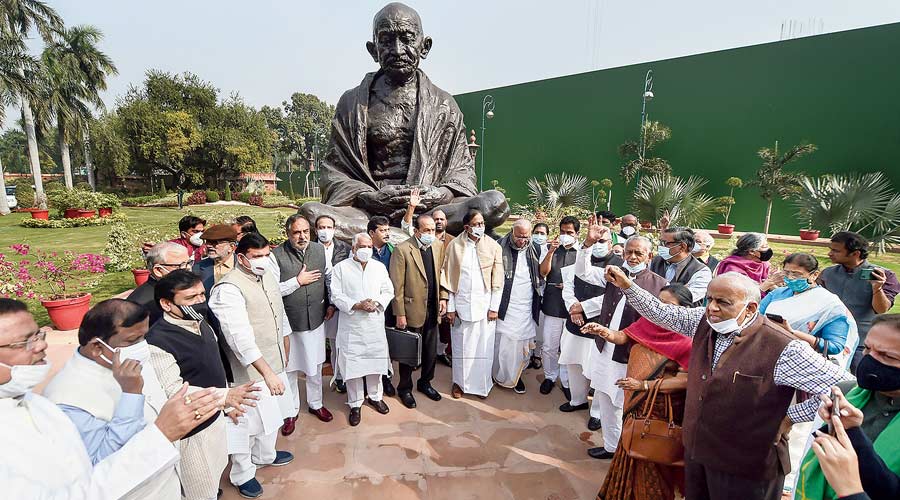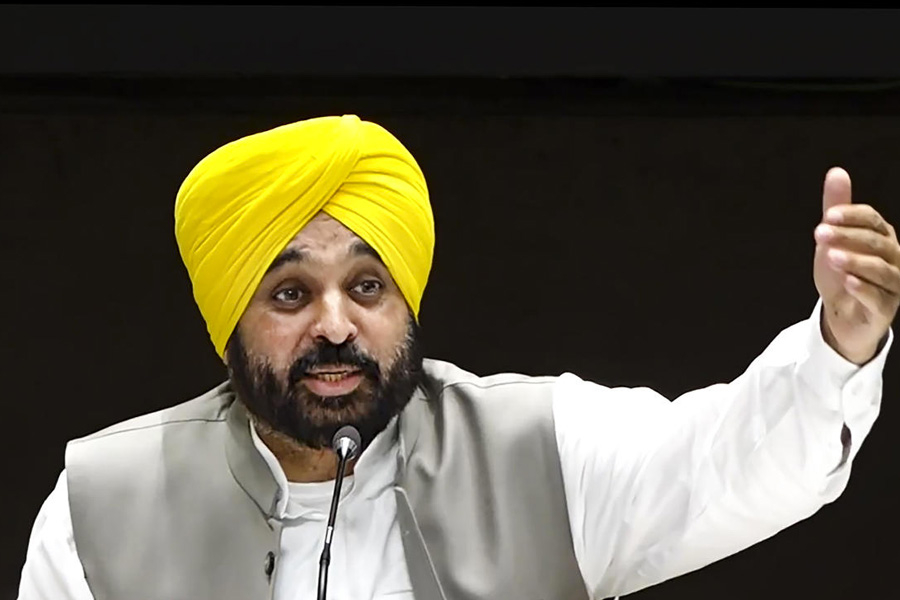Journalists protesting against the Narendra Modi government’s move to restrict the media’s entry into Parliament to cover proceedings, which many believe is a ploy to censor news and prevent information flow to citizens, are planning a march after an open letter and appeals by Opposition leaders had no effect.
The Modi government, which has been pushing through bills without debate or discussion, has cited the Covid-19 pandemic to regulate the entry of the media into Parliament for over a year now.
Journalists are not allowed access to the media galleries inside the Lok Sabha and the Rajya Sabha and the Central Hall of Parliament. They are permitted to be on the premises, but away from proceedings, for two days a week.
On November 27, in an open letter to all political parties, journalists had pointed out that curbs imposed in markets, cinemas, restaurants and other public spaces at the peak of the pandemic had been lifted but the restrictions on reporting in Parliament remain.
“We are concerned that there is a depressing trend emerging to isolate Parliament and parliamentarians from media gaze. The trend augurs ill for parliamentary democracy,” the letter said.
On Tuesday, the leader of the Opposition in the Rajya Sabha, Mallikarjun Kharge of the Congress, registered a strong protest with Speaker Om Birla against the curbs. The Congress leader in the Lok Sabha, Adhir Chowdhury, had earlier written to the Speaker.
Birla had in July promised to restore the practice of issuing passes to journalists.
The open letter by journalists, which the Press Club of India posted on Twitter, said: “Parliament is in its winter session and whatever assurances were given to us were not complied with. And adding insult to injury, a new format of restrictions has been spearheaded to thwart the entry of mediapersons….”
Press Club of India president Umakant Lakhera, one of the signatories to the letter, told The Telegraph: “We can understand the restrictions for some time, when the Covid menace was disturbing everything. But now you can see people jostling in marketplaces and public transport. Malls are open. But the entry of the media (into Parliament) is severely restricted. They have adopted a lottery system to allow journalists barely twice a week. Journalists can’t see proceedings, can’t meet MPs…. It smacks of a design to keep the media off Parliament.”
The Press Club of India has put out several tweets expressing apprehensions about what it said was an attempt to curb the flow of information. “This seems to be a ploy to censor transmission of news and information to people. This is a very dangerous trend in a parliamentary democracy like India,” it said.
A march is now planned on December 2 from the Press Club to Parliament.
The media advisory committee of Parliament has been moribund, too. While the committee consisting of senior journalists has to be reconstituted every two years, which previous governments had routinely done, the Modi regime has abandoned the practice.
The last media advisory committee was constituted by then Speaker Sumitra Mahajan in 2014 and it continued to function till 2019 in violation of the two-year norm. Since 2019, when Birla took over as Lok Sabha Speaker, the committee has never met and decisions are unilaterally taken by bureaucrats.











